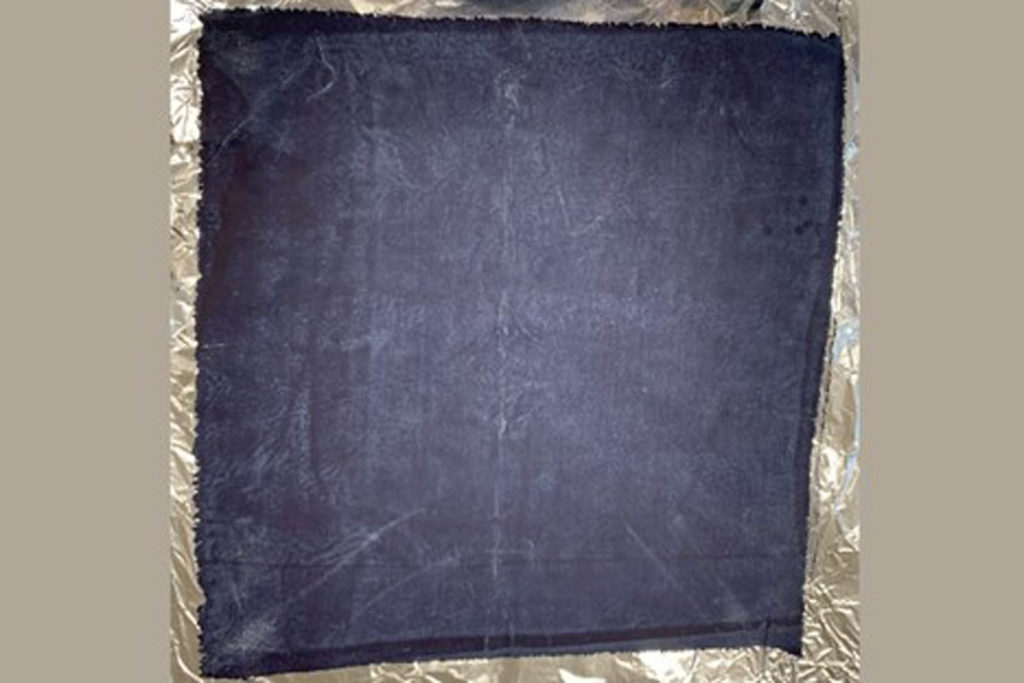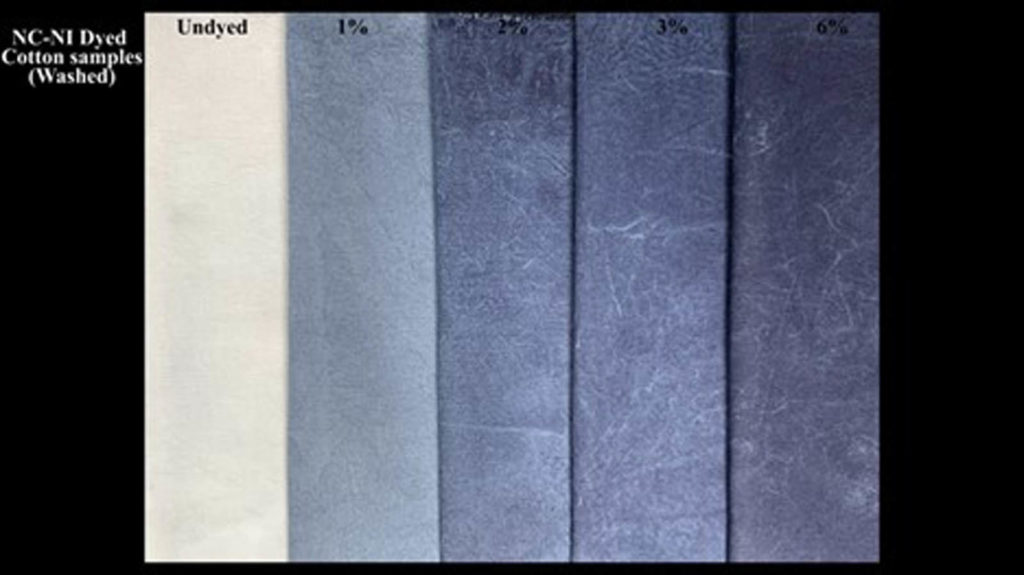
As much as consumers love blue jeans, few may realize their favorite casual clothes are not environmentally friendly to manufacture. Specifically, the process by which they’re dyed is the problem. A new coloration technique, however, has been developed that researchers at the University of Georgia say offers a more earth-friendly alternative.
Led by Prof. Sergiy Minko and doctoral candidate Smriti Rai, scientists there have devised a process in which indigo particles are mixed with wood pulp-derived cellulose nanofibers, a natural sugar known as chitosan (which can be harvested from seafood waste) and water. Although natural indigo has been utilized so far, the researchers say synthetic indigo could also be used.
When the resulting hydrogel is applied to untreated denim, the nanocellulose fibers form a mesh-like coating that encapsulates the indigo particles, adhering them to the denim fibers. The chitosan boosts the adhesion and fixation, ensuring that the indigo remains bonded to the denim once the material has dried and is subsequently worn and washed.

Ordinarily in the dying of jeans, either natural, or more commonly synthetic, indigo pigment is mixed with water, in which the denim fabric is subsequently dipped. Because neither form of indigo is water-soluble in its initial state, though, toxic reducing agents such as sodium hydrosulfite have to be added in order to make it so.
After the dying process is complete, the wastewater is released back into the local waterways. Although government regulations require that the bulk of the chemicals be removed from it first, the water invariably retains some pollutants.
Not only does the new dying technique not require the use of any toxic chemicals, it’s also more effective than existing processes at securing the dye into the denim. This means that much less water and dying time is required. Additionally, denim that’s dyed via the new technique has approximately the same thickness, weight and flexibility as conventionally dyed denim.
A paper on the research was recently published in the journal Green Chemistry.
Source: University of Georgia
 TEXTILES.ORG
TEXTILES.ORG


